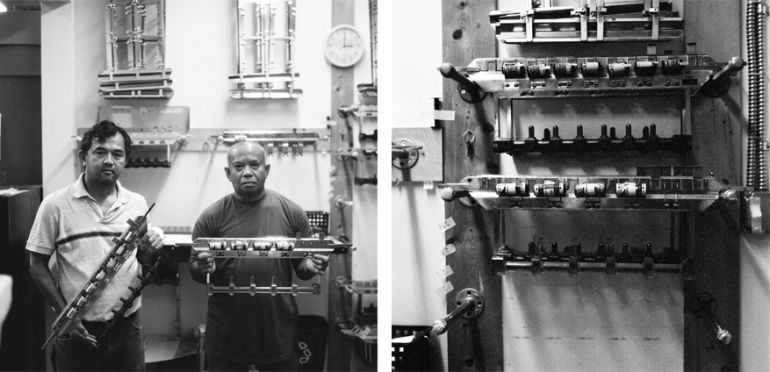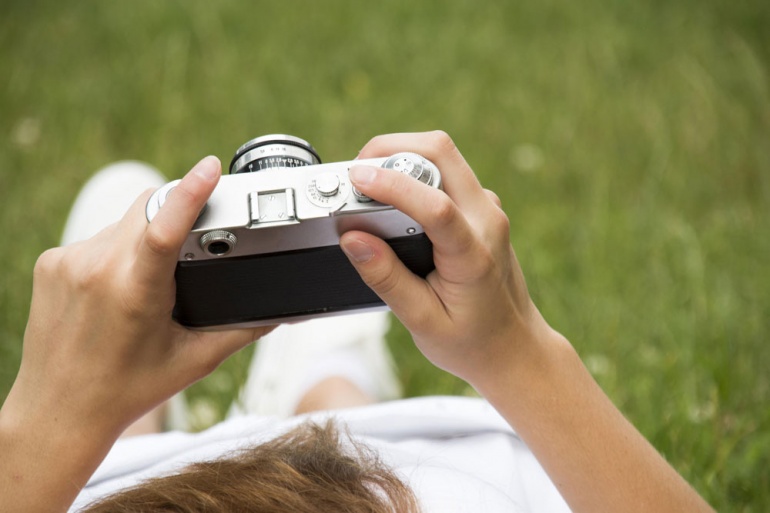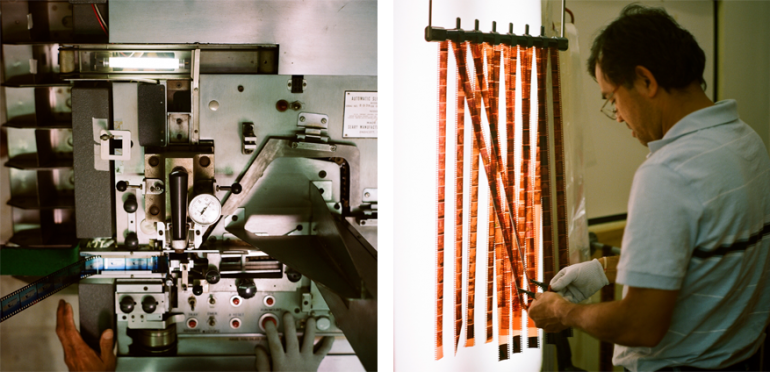Pushing and Pulling Film: the Ultimate Guide

“Pushing” and “pulling” are terms you’ll often hear in the film photography world. But because so many photographers’ relationships with the medium stem from a digital photography world, the topic is oftentimes misunderstood.
So, Richard Photo Lab is breaking down exactly what it all means in our ultimate guide to pushing and pulling photographic film!
There are two times in the practice of film photography that pushing/pulling film comes into play:
1) When you’re shooting film, and
2) When you’re developing film

1) PUSHING/PULLING DURING SHOOTING
Before we talk about pushing/pulling during shooting, you need to know what ISO is.
ISO is a system of measuring a type of film’s speed, which indicates that film’s sensitivity to light. Lower ISO numbers are less sensitive while higher ISO numbers are more sensitive. When you load your camera with film, you will indicate an ISO rate for your film.
Pushing Film (or UNDERexposing) In-Camera
When you push your film during shooting (“underexposing” is the more common term for pushing film in-camera), you’re setting your camera to have a higher ISO rate than the film. Essentially, you’re telling your camera that the film inside it is more sensitive to light than it actually is. This speeds up the exposures, thus exposing your film to less light.
When you underexpose your film during shooting, it will usually need to be in the chemical developer for longer in order to compensate—we'll talk more on that later.
So, why would anyone want to underexpose while shooting? You may need a faster exposure for shots with moving subjects, or in low light situations in order to keep your shutter speed from being impossibly low.
Pulling Film (or OVERexposing) In-Camera
When you set your camera to have a lower ISO rate than your film, you are pulling your film during shooting (“overexposing” is the more common term for pulling film in-camera). You’re telling your camera that the film is less sensitive to light than it is, thus exposing the film to more light.
For black & white film, overexposing is a somewhat uncommon practice, but can be helpful when shooting subjects or environments with high contrast, to decrease the range of values.
Color negative film, however, has a lot of latitude in terms of exposure, and many photogs will overexpose their film to help increase the color saturation and light. Even though the film is being pulled in-camera, the film is developed normally (we’ll tell you why in the next section).

2) PUSHING/PULLING DURING DEVELOPMENT
In order to understand pushing/pulling film during development, let’s start with a little visualization exercise to illustrate the chemical process of developing film.
Imagine a frame of film as an empty square. Drop a handful of sand onto the square. That sand represents the light that hit the film. In some places there is more sand, and in some places there is less sand. When you develop film, you are developing the areas on the square that were hit by sand.
Two things determine the brightness/darkness of the image: how much sand hit the square, and how long it is in the developer. The areas that were hit by sand get brighter the longer they are in the developer.
Pushing Film in Processing
When you push your film in processing, it is left in the developer for longer than normal. This is usually done with underexposed film.
But (and this is where a lot of photogs get into trouble) it results in scans that have muddy/grainy shadow areas. Why?
Let’s go back to our visualization exercise: if an area in the square was not hit by the sand at all, leaving it in the developer for longer won’t change the fact that it wasn’t hit by sand. Pushing the film might produce a small amount of detail in the areas that were lightly dusted with the sand (the shadows), but not by much.
This unequal rise in exposure—in which bright areas become lighter, while shadows stay more or less the same—increases the contrast and grain of the film. This is why pushing film in processing isn’t a way to “save” underexposed film as much as an artistic tool in your bag of photog tricks.
Remember: When you are intending to push film in processing, make sure that you are metering for the medium to darker areas of the image in order to preserve details in the shadows.
Pulling Film in Processing
Pulling film in processing is similar to pushing, but with the reverse effects. It is used when film is overexposed and would benefit from less contrast. However, Richard does not recommend pulling film in processing, especially color film. Why? The development time is already quite short, and the process often results in a flat, murky look.
When pushing or pulling film in processing, it’s important to note that the most noticeable effects will be seen in the increase or decrease of contrast in the image, not an increase or decrease of effective exposure.
So the next time you chat with your photog friends, or with the lab, keep in mind the differences between pushing and pulling 1) during shooting (under/overexposure) vs 2) during processing.
#happyshooting



